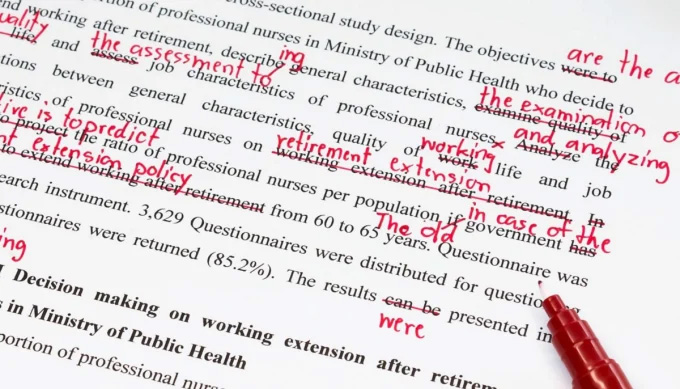
Some texts just read as too long. Maybe they do have a load of words – that chapter at 18k. That paper at 10k. But some chapters, papers, books and dissertations read long even if they are within word limits.
Sounds strange, yes. How can a text read long if it isn’t? Well, you’ve probably had this experience. You’re reading along – and along – and along. A-long. The text seems to be going on forever. And you don’t know where the text is going. Yawn.
You flick through the rest of the pages to see how much more there is to go. If there’s only a few pages left, you grit your teeth and finish. But if there’s a lot, chances are that, unless you have to read on, you won’t. You’ll put the text down as never go back to it.
Now there’s a lot of complicated reasons why some texts read as too long. Here’s five common ways that writers make their texts feel wordy.
- The writer is trying to do too much. The text has more than one big move. Or one big point.
A paper usually has a point to make, as does a chapter in an edited collection. (Papers often get rejected on the grounds that they aren’t clear about their point – or they try to make too many points at once.) A chapter in a book or thesis is generally one move in an overall argument. Even if there are other threads carried over, each chapter has a particular job to do for the overall case being made. If the reader can’t figure out the point or move then at some stage they’ll conclude the text is too long.
- There is too much detail.
Can academic writers ever put in too much information? I’m afraid the answer is yes – when they tell you everything about the topic rather than show you their take, and what ‘stuff’ is relevant to their topic and argument. When academics write an assignment-style essay instead of an argument, they tend to use a lot of words. A lot. The reader is baffled – but it’s not the everything-I-know-about-x text per se, but having to continually work out what’s important and what’s not. The text reads as too long and the reader gives up. Full stop.
- There are too many sections.
Academics often write to a set of headings. But if the writer has too many the text is bitty and the argument atomised. And if the writer doesn’t pay enough attention to the ways in which the sections build on each other, the reader gets disconnected bits that they can’t put together. The content of sections has to be sutured together through a logic and explicit links that the readers can see. No amount of signposting can make up for missing pieces of argument.
- The writing is just plain dull.
Dull texts feel long even when they aren’t. And academic writers can make their writing very hard to get through. Identical sentence length. Repetitive syntax. Sentences crammed full of technical language with not enough explanation. Overuse of passive voice. Nouny prose. The writer hasn’t put themselves in the text through evaluation and interpretation. There is too much “I” writing and not enough about the topic at hand. There are too many quotes. There are more citations than actual text. etc. The end result is that there is too much hard stuff to get through. The reader concludes there are too many words – too many of these kinds of words.
- The writer has been careless.
Most academic readers are accustomed, and expect, to see clean texts. If academic writers take no notice of spelling and grammar conventions, or if they keep making loads of errors with their citations, then readers will find the text too long. How many more pages of this do I have to read?
You get the picture. and there are things that you can do about wordy texts.
The key word for the too-long-for-the-reader writing is care. If writers think about taking care of their readers, then they take care of their writing. Even if first drafts have all five problems listed above, the writer can care for their reader by revising care-fully. Words are not set in stone.
The next post or two will suggest a few places to start tackling wordy writing.